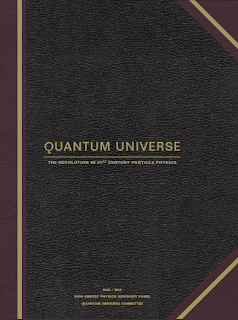Creating a New Copernican Revolution 001
What is the nature of the universe? How many dimensions exist? What is reality? Although modern physics can explain many observations of time, space, matter, and energy, researchers have been investigating and theorizing various models which might provide answers to a wide range of puzzling anomalies. The apparent expansion of the universe wherein new space is created, and observations suggesting vast distributions of invisible mass are two of the more recent observations resisting some of the longest investigations, using some of the most expensive instruments ever conceived, by the best educated scientists who have ever lived. Still, they remain unexplained. A high-level government panel report entitled "Quantum Universe" presents an overview of mysteries currently confronting physics with recommendations on how they can be solved.
Why bother with such questions at all? There are at least two kinds of answers: philosophical and practical. Philosophical answers are herein considered to deal with innate human needs and emotions, such as our curiosity and need to know what is over the next hill. As we will examine in detail later, this curiosity is a powerful motivating factor for many animals, unless they are in fear, injured, or ill. In the absence of adverse conditions: exploration of the unknown is natural behavior for humans. Discovery of new lands, new things, and new ideas is generally accepted as virtuous or inspirational, sometimes even heroic.
Members of the scientific community, as opposed to technical or engineering communities, are largely driven by prestige based on having uncovered, discovered, or developed new knowledge. This knowledge is not necessarily required to to have immediate application to people's everyday living.
In contrast, technology and engineering focus on the kind of practical answers which tend toward more direct, utilitarian ends. These communities focus more on physical deliverable which make life tangibly better or in extreme cases: saving it. From the mastery of fire to global positioning systems, our development of technology and technique has made us what we are today, both enabling and constraining what we can do and become in the future.
In Creating a New Copernican Revolution we will look at historical, cultural, and cognitive factors which have lead to adoption of the current standard model in physics as well as where misperceptions appear to have crept in along the way. We will examine how cognitive frameworks are leading us astray, why the organizational structures of physical science research prevents revolutionary progress, the reasons why our knowledge gaps condemn current approaches to failure and finally: characteristics of successful research methods and attributes we can can be relatively certain will be part of the next revolution in physics.



Comments